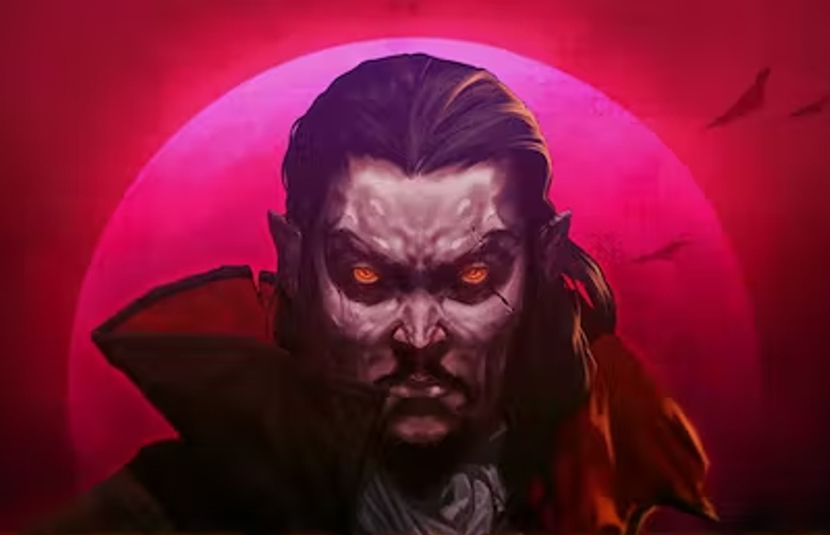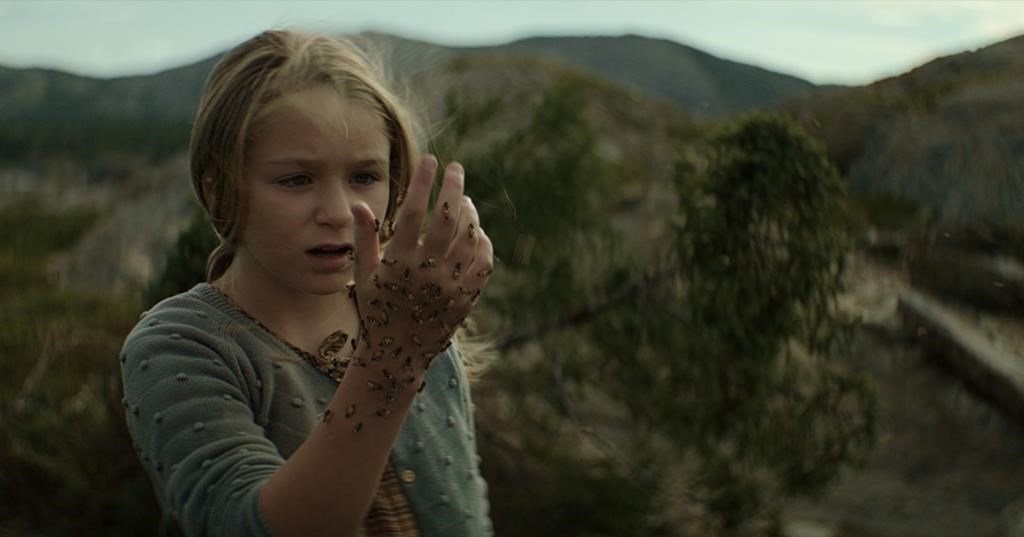Reviews
‘Vampire Survivors’ Nintendo Switch Review – Survival Game Is Now More Addictive Than Ever Before

It’s hard to convey how much of a game changer Vampire Survivors is on Nintendo Switch. The roguelike game has quickly made its way to numerous platforms to various levels of success, but today I’ll be taking a look at the newly released Switch version.
For the uninitiated, Vampire Survivors is where players take on the role of various characters inspired by archetypes of Castlevania characters. From there they’re put into an endless gauntlet of survival against non-stop enemies. Players don’t need to hit a button to attack as characters automatically attack; instead they’re tasked with focusing on positioning and picking up XP gems that allow their heroes to be equipped with more weapons and stat boosting items.
The creatures players will face include bats, skeletons, zombies, demonic plants, and various other monsters that take obvious inspiration from the Castlevania series. After about 30 minutes of battle, players are greeted with the Grim Reaper himself and the level comes to an end. Vampire Survivors might have the most simplistic gameplay ever but that allows it to be playable by everyone of every single skill level.
The Nintendo Switch version brings the full experience to a portable form; sure the game is already available on mobile phones, but having actual controllers and zero ads feels like the proper way to play. The Switch version also includes the latest couch co-op update that makes defeating hordes an absolute blast but eventually leads to busy screens with so much happening that it’s hard to make out what’s going on at certain points.
Vampire Survivors offers progression in the form of spending gold you find in levels on new characters and upgrades. Though you start with a whip-wielder, I instantly find myself gravitating towards the magic user as she fires at the nearest enemy instead of having to position for a proper whiplash. There’s a great variety of starting characters, each one using a different weapon you find within the levels. If you find yourself not liking a certain starting weapon, I highly recommend unlocking someone new and getting a new starter weapon. You never know who will take you to those satisfying level conclusions.
Level layouts are infinitely repeating but feature unique themes and layouts. The starter stage is a big grassy field with little obstruction, but you’ll soon find yourself in places like a horizontal oriented library or an infinitely vertical castle. Vampire Survivors provides a satisfying pace of progression that melds wonderfully with its addicting nature.

Vampire Survivors is satisfying gaming concentrated into its most pure form. It’s as satisfying as getting the super shotgun in a Doom game or defeating an annoying boss in Dark Souls. It’s one of the first games in a long time where I found myself saying “just one more round,” inevitably turning my quick play sessions into hour long excursions. With the Nintendo Switch release it adds a new portable element that makes it even more addicting and has me throwing my Switch in my backpack far more often as of late. For the price of about a cup of coffee, Vampire Survivors is the most bang for your buck that delivers an insanely addicting experience. Highly Recommended.
Vampire Survivors is available now on Nintendo Switch.

Editor’s Note: Review code provided by the publisher.

Reviews
‘The King Tide’: An Island Town Rots with Moral Decay in Canadian Folk Horror Fable [Review]

The opening scenes of director Christian Sparkes’ The King Tide set an ominous tone: a powerful storm takes down the power lines of a small island town as a pregnant woman loses her child while her dementia-suffering mother sits nearby. In the morning, as the town takes stock of the damage and the power is restored, a surprising discovery is found in an overturned boat in the harbour: a baby girl…with the ability to heal.
Writers Albert Shin and William Woods, working from a story by Kevin Coughlin and Ryan Grassby, treat the story as something of a morality tale mixed with a fable. Following the cold open, the action jumps ahead 10 years at a point when the unnamed island (the film was shot in Newfoundland, Canada) is thriving. The fishing is bountiful, the islanders are self-sufficient and have cut ties with the mainland, and most everyone is happy.
As characters are prone to saying, it’s all thanks to Isla (Alix West Lefler), the miracle baby who has grown up worshipped by the islanders. While Mayor Bobby Bentham (Clayne Crawford) and his wife Grace (Lara Jean Chorostecki) endeavor to raise Isla like any other little girl, the reality is that the island’s entire ecosystem revolves around her miraculous powers. It is only because of Isla that they survive; every aspect of their lives – from medicine to food – relies on her.
Each day the citizens line up for their allotted time with the young girl – be it to stave off breast cancer, like Charlotte (Kathryn Greenwood), or recover from another night of heavy drinking like former doctor, Beau (Aden Young). There’s even a predetermined schedule for when she will go out on the boats and use her power to lure fish into the nets.

One fateful day, Bobby succumbs to peer pressure and alters Isla’s schedule at the last minute to accompany cod fishermen Marlon (Michael Greyeyes) and Dillon (Ryan McDonald). A childish game with fatal consequences is played, but with Isla indisposed, a young boy, who would have otherwise been fine, dies. And while the rest of the community grieves, it is Isla who is completely shaken and, unexpectedly, loses her powers.
Suddenly the entire balance of the island is thrown off. Folks like Grace’s mother, Faye (Frances Fisher), who relied on Isla to keep her dementia at bay, suddenly reckon with mortality, while the food security of the town is called into question. Faye’s late-night “support group” meetings take on an urgent and secretive tone and the townspeople claim ownership of Isla’s time despite Bobby and Beau’s protests that she needs rest to recover from her trauma.
Like the best thrillers, the politics and personalities within the community come into play as morals are compromised and the good of individuals vs the collective is played out in increasingly desperate situations. The King Tide excels because it is interested in exploring the competing motivations of the townspeople, while also resolutely refusing to paint anyone as inherently good or bad. These are desperate people, determined to remain independent and free from outside interference, while protecting their trapped-in-amber way of life.

These developments work because there’s a humanity to the characters and The King Tide wisely relies heavily on its deep bench castoff character actors to drive the conflict. Crawford is the de facto protagonist of the ensemble and he’s also the most straightforward character: Bobby is a good man and a loving father, but he’s no white knight. At several points in the film, his willingness to acquiesce to the demands of the community and retain his power causes events to spiral further out of control.
Even more fascinating are Grace and Faye, two commanding women whose capacity for maternal love is matched – or eclipsed – by their own self-interests. A mid-film discovery about Isla’s power reframes Grace’s priorities, ultimately pitting her against her husband. As a result, Grace is incredibly compelling and frustrating (in a good way) and Chorostecki, who has done great genre work on both Hannibal to Chucky, plays the moral ambiguity exactly right. Grace is a fascinating and flawed human character in a film filled with them.
The same goes for Fisher, who deftly balances Faye’s grandmotherly love for Isla with the needs of the community and, by extension, her own health demands. In the hands of a lesser performer, it would be easy to hate Faye for her actions, but Fisher’s performance perfectly captures the fierce determination and fear that drives the island’s matriarch.
Finally, there’s Aden Young, The King Tide’s secret weapon. The ten-year jump reveals that Beau has undergone the most significant transformation: while everyone else has benefitted from Isla’s powers, her presence has eliminated the need for a doctor. With the clinic effectively shuttered, Beau has become an alcoholic; a shell of his former self with no purpose.
Like Bobby, Beau is the easiest character to root for because of his selfless desire to protect Isla, but Young (renowned for his work with Crawford on Rectify) unlocks the character’s tragic pathos and, in the process, becomes the film’s emotional anchor.

Framing the moral decline of the islanders and anticipating the unexpectedly devastating climax is the natural beauty of Newfoundland. As shot by cinematographer Mike McLaughlin, there’s a steely beauty to the geography, resplendent with rocky cliffs, pounding surf, and gusty bluffs that reinforce the islanders’ isolation.
There’s a fierce pride in their struggle to survive independently, evident in the simple lodgings and the antiquated alarm bell that is rung whenever fishing ships from the mainland stray too close. It’s a chilly, atmospheric calling card for one of the most picturesque provinces in Canada, but it is a perfect complement for the folk horror narrative.
Armed with serene, beautiful cinematography, murky moral developments, and a deep bench of talented character actors, The King Tide is a quiet gem that demands to be seen. It’s one of the year’s best genre films.
The King Tide is in theaters April 26, 2024.














You must be logged in to post a comment.